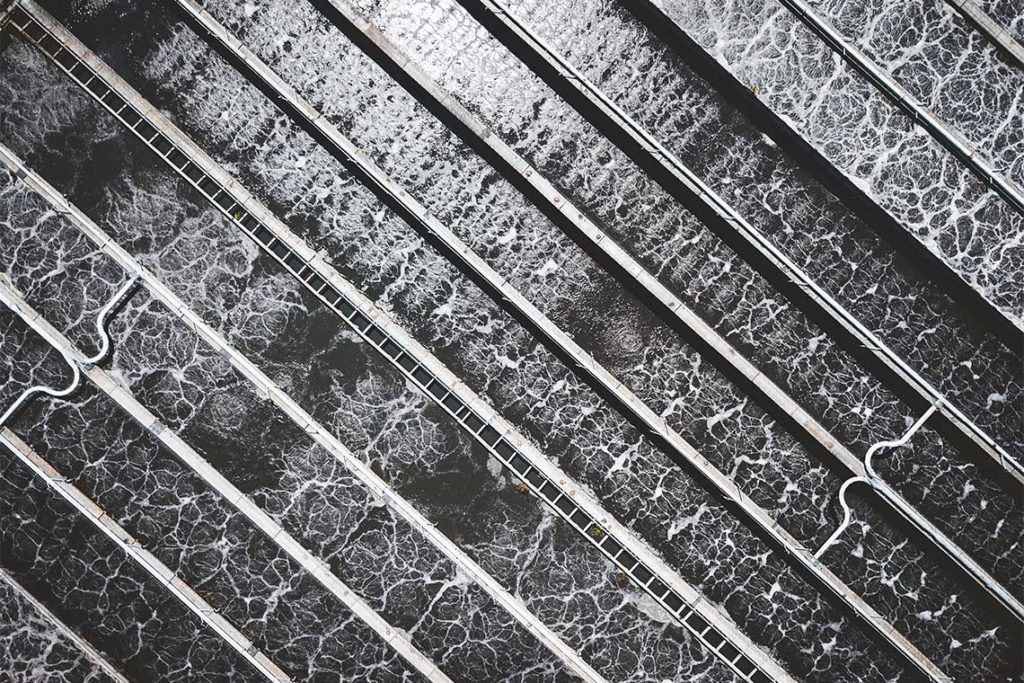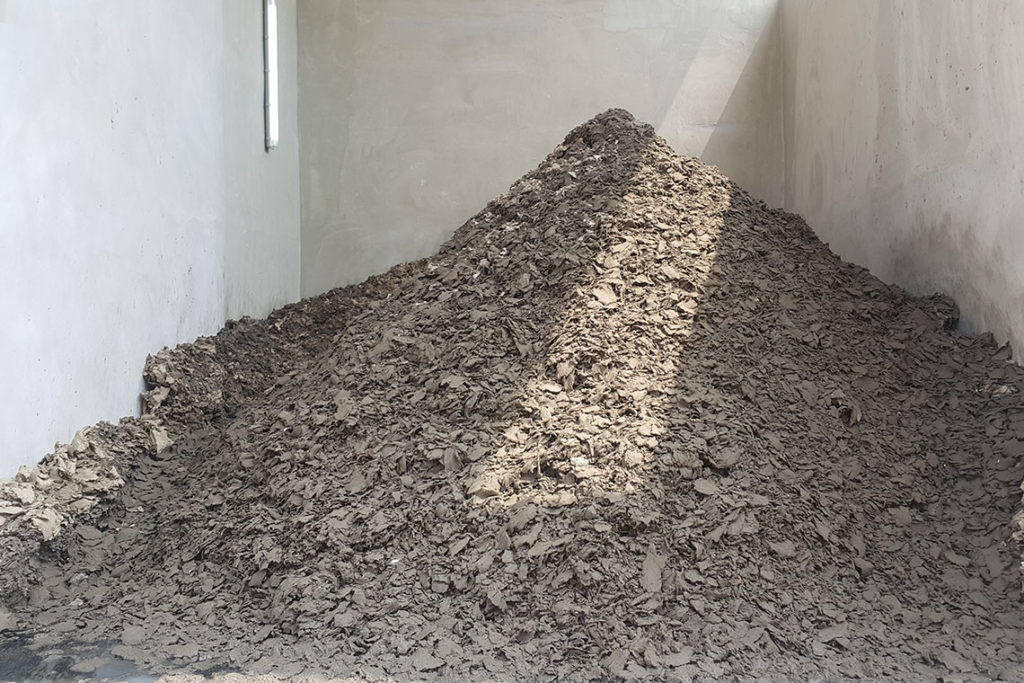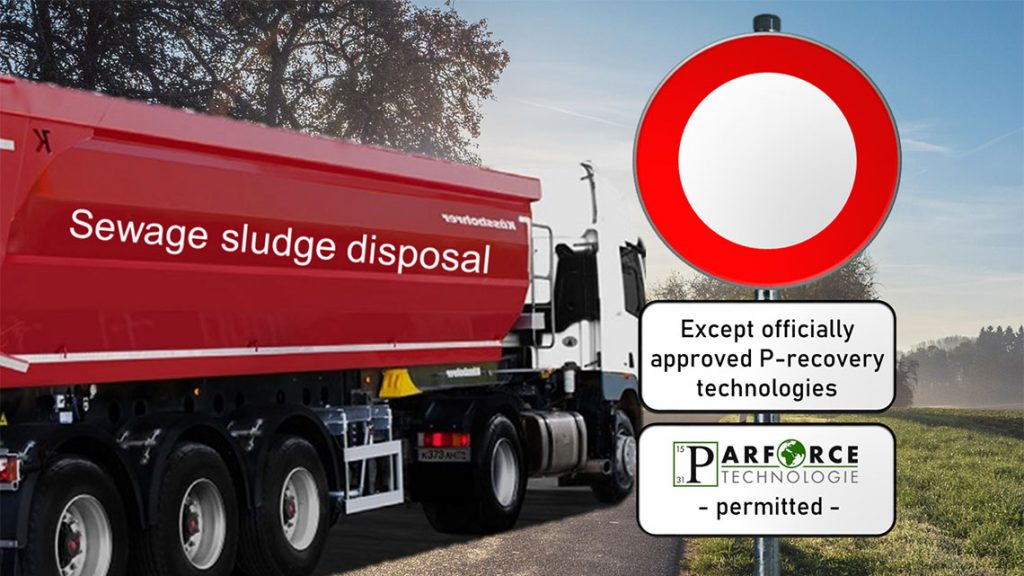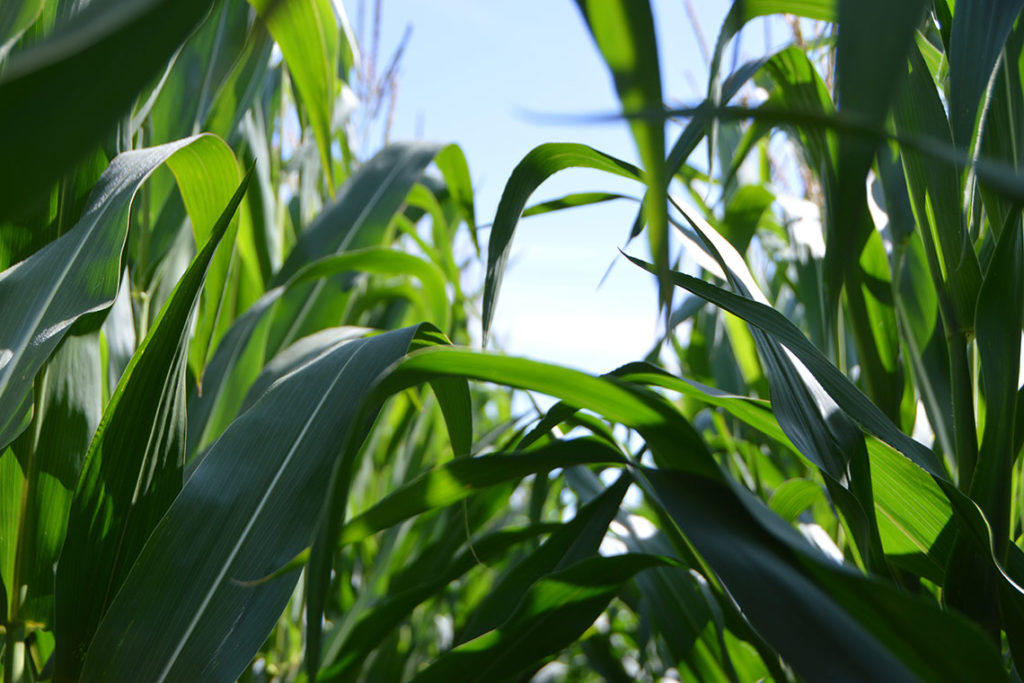In principle, wastewater treatment can be divided into two general operational areas:
- wastewater treatment and
- the sludge treatment
Legal requirements for wastewater treatment in Germany are set out by the Water Resources Act and Waste Management Act. The Water Resource Act regulates the conditions and requirements for the collection, treatment and discharge of treated wastewater. The Waste Management Act, and in particular the special provisions of the Sewage Sludge Ordinance (AbfKlärV), regulate the utilisation of the residual materials (sewage sludge) produced during wastewater treatment.
Wastewater treatment
During wastewater treatment, pollutants are removed from the wastewater and the treated water is returned to the water cycle. Wastewater treatment plants thus fulfil an important environmental service. The legal requirements are high combined with close official monitoring. If specified limit values are exceeded in the effluent of a wastewater treatment plant, there is a risk of severe financial penalties or even criminal charges for those responsible for plant operations.
Various process steps are applied during wastewater treatment. Although each wastewater treatment plant is individually planned and constructed, they follow the same basic principles. The following process stages are standard for municipal treatment plants in Germany:
- Mechanical-physical treatment
- Biological treatment
- Denitrification and phosphorus precipitation
In terms of plant technology, a central wastewater treatment plant consists of a screen, a grit trap, a primary clarifier, a biology unit and a secondary clarifier with an outlet to a discharge structure.
The screen removes coarse impurities such as hygiene articles, plastic bags, branches or coarse stones from the wastewater stream arriving at the treatment plant.
The grit trap is a settling basin or channel in which sand, small stones or even glass splinters are separated by gravity.
Primary clarifiers are usually found in wastewater treatment plants with anaerobic sludge treatment. In the primary clarifier, undissolved organic contaminants are removed as sludge (so-called primary sludge) from the bottom of the tank. The impurities settle at the bottom because of reduction in flow velocity and turbulence.
Screen, grit trap and primary clarifier are part of the mechanical-physical wastewater treatment.
The biological treatment stage includes the biology (aeration tank) and the secondary sedimentation tank. In the biology, the dissolved organic impurities are converted by microbes and fungi through metabolic processes into biomass, which forms the so-called activated sludge, and carbon dioxide. By injecting (atmospheric) oxygen, the conditions for the oxygen-consuming organisms are optimised. A number of significant parameters are measured at a wastewater treatment plant. However, two parameters play a prominent role in process control. BOD5 and COD are so-called sum parameters and indicate how high the chemical oxygen demand (COD) and the biological oxygen demand (BOD) are to bind the impurities by oxidation.
In the secondary clarifier, the activated sludge formed in the biology (as suspended solids) is settled and the supernatant water is discharged via the discharge structure into the receiving water body. The settled activated sludge is removed from the secondary clarifier and for the most part returned to the biology as so-called return activated sludge, as this contains the microbes and fungi for the oxidative processes. The part that is not needed for the biology is separated as so-called Excess activated sludge and fed into the sludge treatment.
At most municipal wastewater treatment plants in Germany, biological treatment is combined with additional processes to remove phosphorus and nitrogen.
For nitrogen removal, the nitrogen originating from organic compounds (e.g. ammonia) is first oxidised to nitrate by special microbes under oxygen-rich conditions (nitrification) and then converted to atmospheric nitrogen under oxygen-poor conditions (denitrification). There are various technical solutions for this. Often, however, an aerobic (oxygen-rich) and a less aerated anaerobic (oxygen-poor) zone is set up in the biology tank of the biological treatment stage.
Basically, two different process approaches are used for phosphorus removal: biological phosphate elimination (Bio-P) and chemical phosphate precipitation with sulphate or chloride precipitation salts. In some cases, the processes are also used in combination.
While biological phosphate elimination enables phosphate separation for recovery in sludge treatment, in the case of chemical phosphate precipitation this is only possible with extreme technical effort. In this case phosphorus has to be recovered from ash after thermal treatment of the sewage sludge. In the case of chemical phosphate elimination, iron- and aluminium-based sulphate or chloric precipitation salts are used, which form sparingly soluble iron and aluminium phosphates.
In biological phosphate elimination, special phosphate-absorbing microbes are exposed to alternating aerobic and anaerobic conditions, similar to nitrogen elimination. This causes the microbes to absorb more phosphorus than under constant conditions. Due to the change in conditions, the microbes release the excess phosphate (so-called luxury uptake) and it can be separated by struvite crystallisation.
Sludge treatment
Sludge treatment is an obligatory task for operators of wastewater treatment plants. The main task of sludge treatment is to render the residual material (sludge) produced during wastewater treatment harmless to the environment. This includes stabilisation and proper disposal in accordance to the Waste Management Act. Stabilisation means that the sludge must be converted from a biologically active, putrescible state into an inactive, stable state.
The sludge produced at the wastewater treatment plant is commonly referred to as sewage sludge, although there is a legal definition for sewage sludge under waste legislation. According to § 2, para. 2 AbfKlärV, sewage sludge is waste from the completed treatment of waste water in waste water treatment plants, consisting of water and organic and mineral substances, excluding screen, sieve and grit trap residues, even if the waste has been dewatered or dried and treated in plant beds or in any other form. Section 3, subsection 3 differentiates sewage sludge from other sludge produced at the treatment plant. Other than sewage sludge is as raw sludge. According to the legal definition, raw sludge is unstabilised or partially stabilised sludge that is taken from waste water treatment plants before waste water treatment is completed. All sludge at the treatment plant that is not prepared for disposal or utilisation is thus raw sludge.
Raw sludge can be divided into three main categories according to the process steps:
- Primary sludge
- Excess activated sludge
- Return sludge
Primary sludge is the organic solid matter that has settled in and been removed from the primary clarifier. This type of sludge is mainly found in wastewater treatment plants that have a so-called anaerobic sludge treatment – also called digestion.
Excess activated sludge is the portion of the extracted activated sludge not returned from the secondary clarifier to the biological treatment process. Return sludge refers to the portion of activated sludge returned from the secondary clarifier to the biology tank unit.
Three basic process principles can be distinguished in sludge treatment:
- Aerobic sludge treatment
- Anaerobic sludge treatment (digestion)
- Chemical sludge treatment by adding quicklime
In chemical sludge treatment, biological processes are suppressed by adding quicklime (stabilisation). This leads to an increase in masses. Stabilisation of this kind is hardly ever carried out any more due to high costs.
In aerobic sludge treatment, organic compounds are converted into largely inactive biomass by atmospheric oxygen during the wastewater treatment process. Due to longer retention times in the clarification tanks and the energy demand for aeration systems most of the wastewater treatment plant´s energy consumption is caused by this process. In most cases, sludge stabilisation is followed by thickening by gravity in open basins. Residual biological activity produces methane, which escapes into the atmosphere. In this process approach, about 1/4 of the organic matter is degraded.
Anaerobic stabilisation, however, converts the organic matter in a digester into inactive biomass and decomposed by about 1/3 of organic matter. The resulting digester gas (methane and carbon dioxide) is collected and used to generate electricity and heat. If the digestion process is additionally preceded by disintegration (destruction of the cell structures of the biomass), this increases the degree of organic degradation and the digestion gas yield. Overall, the retention times of the sludge in the clarifiers and thus the specific energy input needed for aeration are reduced. Energy is required to operate the digesters and any upstream disintegration, which can be covered by the digester gas produced. In anaerobic sludge treatment, primary and excess activated sludge are usually fed together to the digester and stabilised.
Aerobic or anaerobic sludge treatment is followed by mechanical dewatering, which increases the dry matter content (DM) of the sludge from 1.5% DM to 3% DM to about 25%. Mechanically dewatered sewage sludge has a peat-like consistency.
In addition to stabilising the sludge, dewatering highlights the second essential, economic task of sludge treatment – namely the reduction of waste masses to be disposed of.
With the changes in the legal framework for sewage sludge disposal and utilisation from 1 January 2029 onwards sludge treatment receives not only a legally prescribed, but also an increased strategic and economic significance.



